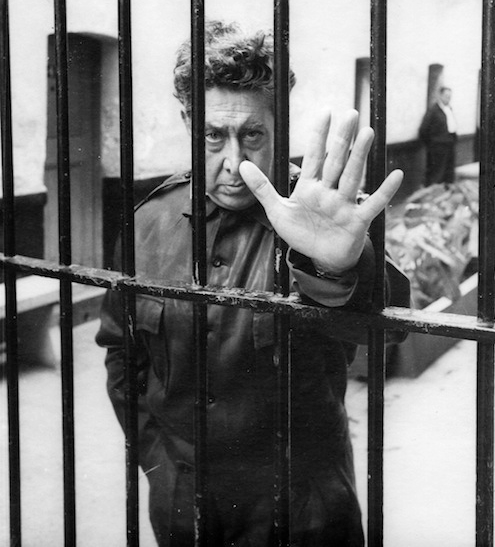Additional information

David Alfaro Siqueiros (1896-1974) was part of the Mexican Muralism artistic avant garde movement, along Diego Rivera and José Clemente Orozco. These artists painted several large murals in public spaces in different cities, with explicit political content. When Siqueiros visited Argentina in 1933, he initially planned to make a mural of these characteristics in Buenos Aires, in a public space in La Boca, and with political content as he usually did. Siqueiros took part in three public lectures during his stay in Buenos Aires, where he summoned the argentinian artists to involve themselves in social movements, using art as a vehicle to promote their political views to the lower classes and social groups. Because of this controversial idea presented by the Mexican muralist, President Agustín P. Justo did not allow Siqueiros to do this kind of public painting in Argentina. Considering this censorship and his risk of political exposure against a right wing military government, Siqueiros ended up accepting a particular offer.
Natalio Botana, a renowned Argentine businessman and journalist, was at the time the owner and director of newspaper Crítica, the most sold out newspaper in the country. He offered Siqueiros and his wife, uruguayan poet Blanca Luz Brum, to stay for a while in Botana’s residence - Quinta Los Granados located in Don Torcuato, Buenos Aires Province. He requested the artist to paint a mural in an old basement of the house, beneath a service kitchen separated from the main residence, a space Botana wanted to use as an entertainment room for his colleagues and guests. He gave Siqueiros creative freedom, but since this was a private request for a private residence, this mural wouldn’t contain any explicit political content.
Siqueiros took this opportunity to summon three young argentine artists: Antonio Berni, Juan Carlos Castagnino and Lino Enea Spilimbergo, as well as Uruguayan stage designer Enrique Lázaro. These five artists formed a Latin American collective that worked together for six months in order to create Ejercicio Plástico. The idea behind this art piece was to experiment with different materials and techniques, in an attempt to find new ways of making mural art. They intervened in the entire space of the basement, creating a 360° painting that interacts with the audience. Instead of using traditional brushes and painting, they experimented with a technique they called new fresco: they painted over fresh layers of concrete using an airbrush and a special painting called silicate. These were, at the time, industrial elements used in factories, to paint cars and different materials. Furthermore, instead of sketching the designs, they took photographs of Siqueiros’ wife, Blanca Luz, who modeled for them in different poses, and they projected her image onto the walls of the basement to paint over them with the airbrush.
The painting remained in the residence for decades, until 1989 when a private company extracted it in its entirety. Due to some legal issues during the 90s, the company was taken to trial and the Court took hold of the mural painting, already extracted and divided in parts stored away in different containers. These were deposited in a customs office in San Justo (Buenos Aires Province) until 2006, when Argentina’s government recovered and started the process to declare it part of the national artistic heritage of our country. In 2007, after 15 years, the painting was taken out of the containers, restored and placed into our current Museum, thus recovering what is considered a masterpiece of Latin America art from the XXth century.